КЛИНОК ексклюзивний ніж ручної роботи майстра студії Fomenko Knifes, купити замовити в Україні (Сталь - CPM® М398™ 62-63 HRC)
- Виробник: Майстерня ножів ручної роботи FOMENKO KNIFES
- Модель: КЛИНОК - ніж ручної роботи Fomenko Knifes
| Загальна довжина клинка mm: | 272±05 мм |
| Матеріал леза | Клинок Ламінат М398 Порошкова сталь BOHLER M398 MICROCLEAN - це нова мартенситна сталь від шведсько-австрійського концерну Bohler-Uddeholm від Rostyslav Dozlo |
| Твердість клинка (метал): | Загартованість - 62-63 HRC |
| Матеріал руків'я: | Больстер нержавіючої сталі, Карбон |
| Довжина леза | 166±05 мм |
- Наявність: Під замовлення
Доступні варіанти
Опис
ТЕХНІЧНІ ХАРАКТЕРИСТИКИ:
Назва ножа: КЛИНОК ексклюзивний ніж ручної роботи майстра студії Fomenko Knifes, купити замовити в Україні (Сталь - CPM® М398™ 62-63 HRC)
Тип ножа: Фіксований клинок
Бренд: Студія ексклюзивних ножів ручної роботи FOMENKO KNIFES
Сталевий лист: Ціліснолитий, насткрізний монтаж на стяжку та смолу
Кут заточення леза: Загострений на 34-35 градусів
Спуски: Прямі
Зведення: 0.1-0.2 мм
Твердість леза: 62-63 HRC
Загальна довжина: 272 мм
Довжина леза: 166 мм
Ширина леза: 26 мм
Товщина леза: 4.2 мм
Товщина руків'я: 24 мм
Шліфування леза: Фініш - повздовжний машинний сатин
Матеріал руків'я: Больстер нержавіючої сталі, карбон.
Колір руків'я: Чорно-сірий
Просочення руків'я: Відсутнє
Покриття руків'я: Шліфування
Отвір для шнурка (під темляк): Є
Темляк - Паракорд популярний серед туристів, екстремалів, рибалок та військових. За допомогою міцного нейлонового шнура кріплять екіпірування, фіксують намети та споруди.
Піхви: Італійська натуральна теляча шкіра чепрак рослинного вичинки та дублення 4.0 мм, оброблена апретурою для захисту від води та просякнута захисними розчинами, прошита вручну вощеною ниткою. Ручне тиснення фактурита. Вільний підвіс та підвіс на пасок.
Модель: КЛИНОК ексклюзивний ніж ручної роботи майстра студії Fomenko Knifes, купити замовити в Україні (Сталь - CPM® М398™ 62-63 HRC)
Номер моделі: 057
Країна народження: Україна
Ремісник: Майстер Олександр Фоменко (Fomenko Knifes), м. Чугуїв (Chuhuyiv), Україна Студія Студія ексклюзивних ножів ручної роботи FOMENKO KNIFES
Найкраще використання: Багатофункціональний: полювання, рибальство, поділ тушки, нарізка тощо
Стан ножа: Новий
Ціна: Вказана з піхвами.
Заточений ніж – не є холодною зброєю.
Наші ножі дуже гострі, тому відкривайте та використовуйте дуже обережно. Ми не несемо відповідальності за травми, пов'язані з використанням наших ножів.
Наша продукція призначена для легального використання лише відповідальними покупцями. Ми не продаватимемо наші продукти особам молодше 18 років.
Наявність регулярно змінюється, при підтвердженні Вашого замовлення ми повідомимо про наявність або термін готовності товару. Виріб може трохи відрізнятися від представленого на фото.
Порошкова сталь М398
Порошкова сталь BOHLER M398 MICROCLEAN - це нова мартенситна сталь від шведсько-австрійського концерну Bohler-Uddeholm, яку розробили і почали виробляти в 2019 році. Підвищений вміст Хрому забезпечує їй гарну корозійну стійкість, а збільшений вміст Ванадію забезпечує сталі надзвичайно високу зносостійкість. Вміст Вуглецю збільшився на 30% порівняно з її попередником сталлю марки М390 і додав їй твердості, яка становить 63-64 одиниці за шкалою Роквелла. На сьогоднішній день сталь М398 вважається однією з кращих порошкових нержавіючих машин, що говорить за себе не тільки її характеристики, але і її ціна, яка досить велика. Відповідно будьте готові до того, що вартість готового ножа не може бути низькою.
Порошкова сталь М398 виробляється відповідно до стандартів європейського рівня і має наступний хімічний склад та мікроструктуру (розглянемо порівняно з попередником сталлю марки М390):

- Вуглець (C, Carbon): є однією з головних частин процесу виробництва сталі, покращує утримання кромки і підвищує в'язкість; збільшує твердість та опір зносу.
- Кремній (Si, Silicon) та Марганець (Mn, Manganese): використовуються як стандартні розкислювачі та дегазатори для видалення кисню при плавленні металу, збільшують міцність.
- Хром (Cr, Chromium): підвищує стійкість до корозії (при показниках >11% робить сплав нержавіючим), посилює твердість та щільність.
- Молібден (Mo, Molybdenum): збільшує твердість, міцність, прожарювання і щільність; покращує оброблюваність та стійкість до корозії.
- Ванадій (V, Vanadium): збільшує міцність, зносостійкість, підвищує щільність і в'язкість; збільшує корозійну стійкість, збільшуючи оксидну плівку; карбідні включення ванадію дуже тверді. Присутність цього металу в сталі говорить про її якість.
- Вольфрам (W, Tungsten): є найбільш тугоплавким металом з усіх, використовується для додавання міцності і в'язкості, покращує прожарювання; зберігає твердість за високих температур.
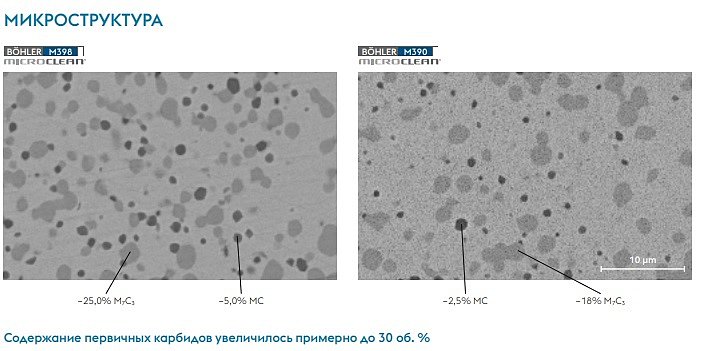
Через більш високу кількість первинних карбідів сталі M398 (близько 30 об. %) твердість, зносостійкість і міцність на стиск в М398 значно збільшуються.
Також для сталі М 398 характерні такі властивості:
- - Високий рівень корозійної стійкості;
- - Висока міцність;
- - надзвичайно висока зносостійкість;
- - Висока стабільність при термообробці;
- - хороша шліфування;
- - хороша полірованість;
- - Висока прожарюваність і міцність на стиск.
Таким чином, ножі з порошкової сталі M398 мають ексклюзивні ножі ручної роботи. Мають відмінні антикорозійні властивості і не вступають у реакції з більшістю лугів та кислот, тобто особливого догляду цим ножам не потрібно, що робить їм величезний плюс при використанні на природі, полюванні, риболовлі та/або в екстремальних умовах*. Мабуть, єдиним мінусом ножів зі сталі M398 є їхня вартість, яка досить висока і треба бути до цього готовим.
Варто пам'ятати, що при використанні ножа за призначенням та дбайливим поводженням, ніж прослужить Вам дуже і дуже довго.
Ну, а купити ніж із порошкової сталі M398 ви можете на нашому сайті knife.net.ua або зв'язавшись з нами за телефоном +380961711010
Недоліками можна вважати лише вартість матеріалу, складність заточування та шліфування.
Ніж з порошкової сталі BOHLER M398 MICROCLEAN
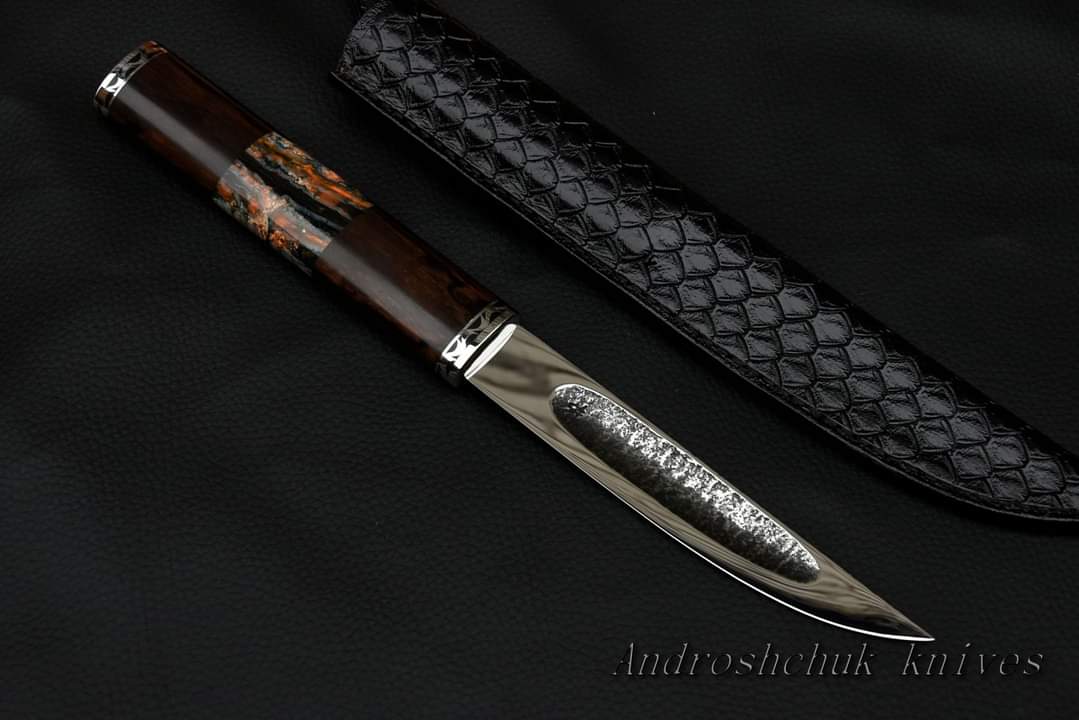
Варто пам'ятати, що при використанні ножа за призначенням та дбайливим поводженням, ніж прослужить Вам дуже і дуже довго
КАРБОН - РУКОЯТКИ НОЖІВ З ЦЬОГО ПРЕМІАЛЬНОГО МАТЕРІАЛУ
Одним з найпрестижніших і дорогих матеріалів для рукояток ножів крім титану і дорогих порід деревини є різновид вуглепластика, так званий «карбон». Матеріал цінується за виняткову легкість, міцність та естетичну красу.

Карбон (від англ. carbon - вуглець) - це полімерний матеріал з композитним складом, виготовлений з переплетених ниток вуглецевого волокна (сarbon fibers). Ці нитки виготовляються з використанням епоксидних смол. Середня щільність матеріалу від 1450 кг/м³ до 2000 кг/м³. Головною відмінністю карбону від інших полімерів, що застосовуються при виготовленні ножів, є дуже невелика вага. Саме вага разом із винятковою міцністю дає карбону перевагу перед іншими матеріалами рукояток: полімером G10, мікартою, пластиком FRN і т.д. При цьому за питомими характеристиками міцності карбон перевершує конструкційні сталі. Основними якостями карбону є висока міцність на розрив, стійкість до високих температур, агресивних середовищ, незначне розширення при нагріванні, висока електропровідність. Також важливою рисою карбону є його природний, отримуваний при виробництві чорний колір, який надає йому благородного та елітарного вигляду.
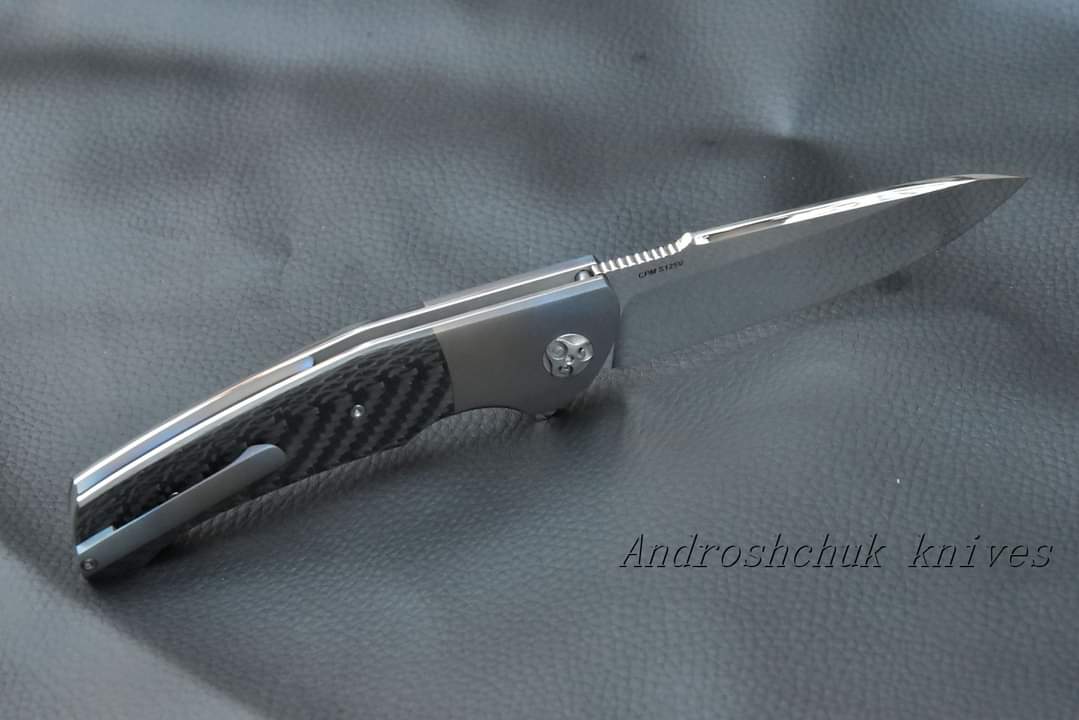
Основу матеріалу складають нитки вуглецевого волокна, середньою товщиною 0,005-0,010 мм у діаметрі. Вуглецеві волокна виготовляються внаслідок складного процесу термообробки. Основне волокно (поліакрил, віскоза) спочатку піддається окисленню повітря при температурі 250 °C протягом 24 годин. У результаті окислення утворюються сходові структури (полімери, макромолекули яких попарно пошиті регулярними хімічними зв'язками). Потім відбувається карбонізація (процес збагачення ниток вуглецем), який проходить при нагріванні волокна серед азоту або аргону при температурах від 800 до 1500 °C. Внаслідок карбонізації відбувається утворення графітоподібних структур (алотропних модифікацій вуглецю). Процес термічної обробки закінчується графітизацією (утворенням графіту в матеріалах, в яких вуглець міститься в розчиненому стані або у вигляді карбідів), вона проходить при температурі 1600-3000 ° C в інертному середовищі. Через війну графітизації кількість вуглецю у волокні доводиться до 99 %. Крім звичайних органічних волокон, для отримання ниток вуглецю можуть бути використані спеціальні волокна із фенольних смол, лігніну, кам'яновугільних та нафтових пеків.
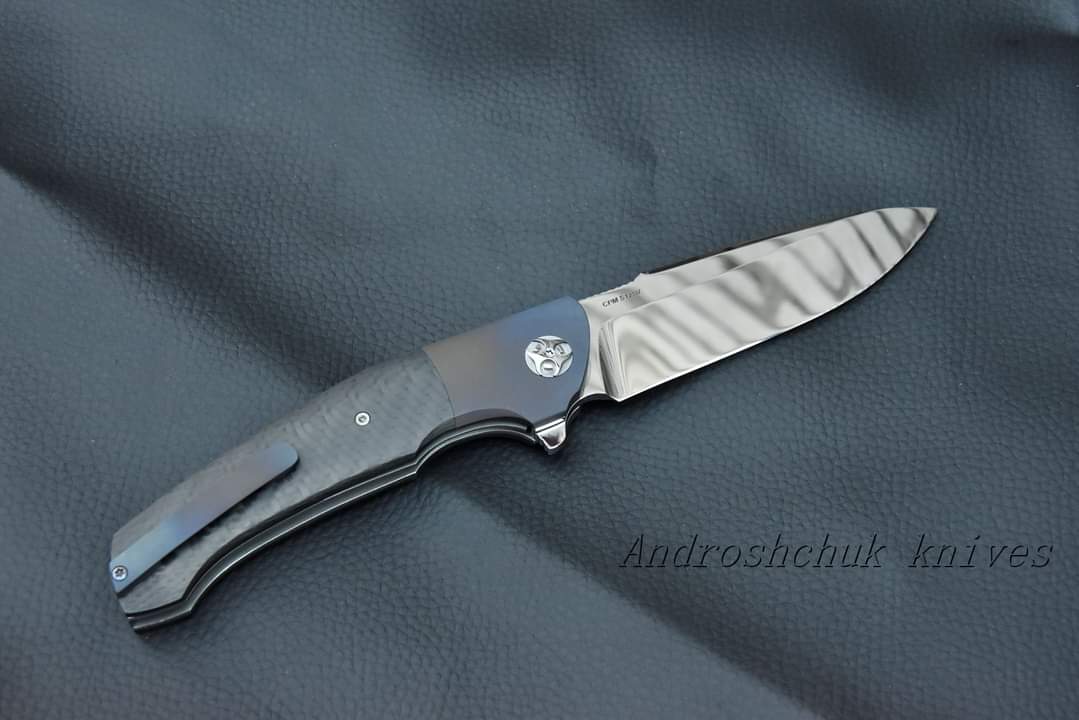
Вуглецеві тканини у свою чергу отримують шляхом плетіння ниток або стрічок. При виробництві цих ниток за основу взято вуглецевий ровінг - джгут із тонких безперервних ниток вуглецевого волокна завтовшки від 3 мікрон, утворених атомами вуглецю. Після переплетення вони складають каркас вуглепластику. Кількість вуглецевого волокна нитки оцінюється числом «К» — кількістю тисяч елементарних вуглецевих волокон. Найтонше і найдорожче вуглецеве волокно - 1К, найбільш поширене вуглецеве волокно 3К, існують також нитки з вуглецевого волокна з К = 6, 12, 24, 48. Тканина, виготовлена з ниток, може мати різноманітний малюнок плетіння (ялинка, рогожа, плетіння та ін). Для надання ще більшої міцності тканини нитки вуглецю кладуть шарами, щоразу змінюючи кут напряму плетіння. Шари скріплюються за допомогою епоксидних смол. Така структура карбону дає можливість армувати волокно додатковими елементами, що зміцнюють його структуру і надають різні кольори і фактуру поверхні. Цими матеріалами можуть бути різні нитки, блискітки, полімерні матеріали різних кольорів.

Основними методами виготовлення карбонових пластин є:
- Пресування, при якому тканина вистилається у форму, попередньо змащену так званим антиадгезивом, призначеним для зменшення зчеплення поверхонь один з одним. Їм може бути мило, віск тощо. Потім тканина просочується смолою, а її надлишки видаляються у вакуумі (вакуум-формування) або під тиском. Після полімеризації смоли виріб набуває закінченого вигляду.
- Вакуумна інфузія дозволяє створювати ламінатний пакет накладенням шарів тканини один на одного і під шари подається вакуумне розрядження. Потім через клапан подається сполучна речовина і під дією вакууму воно заповнює порожнечі і просочує вуглецеву тканину.
- Вакуумне формування, є склеювання шарів при високих температурах і потім вплив вакуумом для формування обсягу виробу. Цей спосіб є одним із найдешевших.
- Метод намотування, який полягає у намотуванні просоченого ровінгу на попередньо підготовлену форму. Після намотування потрібного числа шарів форма з намотаною тканиною поміщається в нагрівальну піч і полімеризується.
- Метод SMC/BMC полягає в приміщенні тканини в прес-форму, нагріту до робочої температури. Прес-форма замикається, у результаті під тиском матеріал розтікається в порожнини форми і твердне. Наприкінці циклу виріб витягується з прес-форми, і виробляється його остаточна механічна обробка та фарбування.

Карбонове волокно застосовується у різних сферах. Зокрема, в авіа та ракетобудуванні, при виробництві деталей корпусу автомобілів та мотоциклів, побутової техніки та високотехнологічних дослідницьких приладів. І вже близько 20 років карбон широко застосовується у виготовленні рукояток ножів середнього та преміального сегмента. При цьому на доладних ножах карбон може бути як у вигляді накладок на сталеві лайнери, так і у вигляді єдиного матеріалу рукояті, закріпленого гвинтами через бонки.
Карбон, що йде на виготовлення ножів, крім своїх основних характеристик міцності, повинен мати ще й досить привабливий зовнішній вигляд. Саме цей фактор збільшує його вартість, ускладнюючи технологію виробництва та вимагаючи найякісніших вихідних матеріалів. Для проклеювання шарів використовуються найдорожчі та якісні смоли, та дорожче обладнання, зокрема хімічні реактори (автоклави). Крім того, для підвищення зчеплення з рукою карбон піддають піскоструминній обробці, що також збільшує витрати на виробництво. Необхідно також пам'ятати, що робота з карбоном вимагає обов'язкового захисту органів дихання та спеціальних приміщень із гарною вентиляцією, і це також веде до зростання ціни.
Колірна палітра та текстура карбону, що використовується на ножах, може бути різноманітною. Серед різновидів карбону застосовуються:
Мозаїчний карбон, який може бути як однотонним, і різнобарвним. Такий карбон застосовується для радіусних проставок на ножах із складними багатосекційними ручками. У цьому карбоні можуть застосовуватися кілька технологій фарбування.

Мармуровий карбон - являє собою хаотичне сплетення карбонових ниток, кожна з яких по-різному відображає світло, що дає йому можливість блищати під різними кутами огляду.

Карбон Lightning Strike («удар блискавки») з мідною ниткою у вигляді сітки, вплетеної у вуглеткань по всьому її об'єму. Зовнішньо аналогічний застосовуваному у фюзеляжах американських літаків для захисту від ударів блискавок. Це тонкий карбон, завтовшки 3,2 мм саржевого плетіння. Має глибокий і яскравий малюнок.
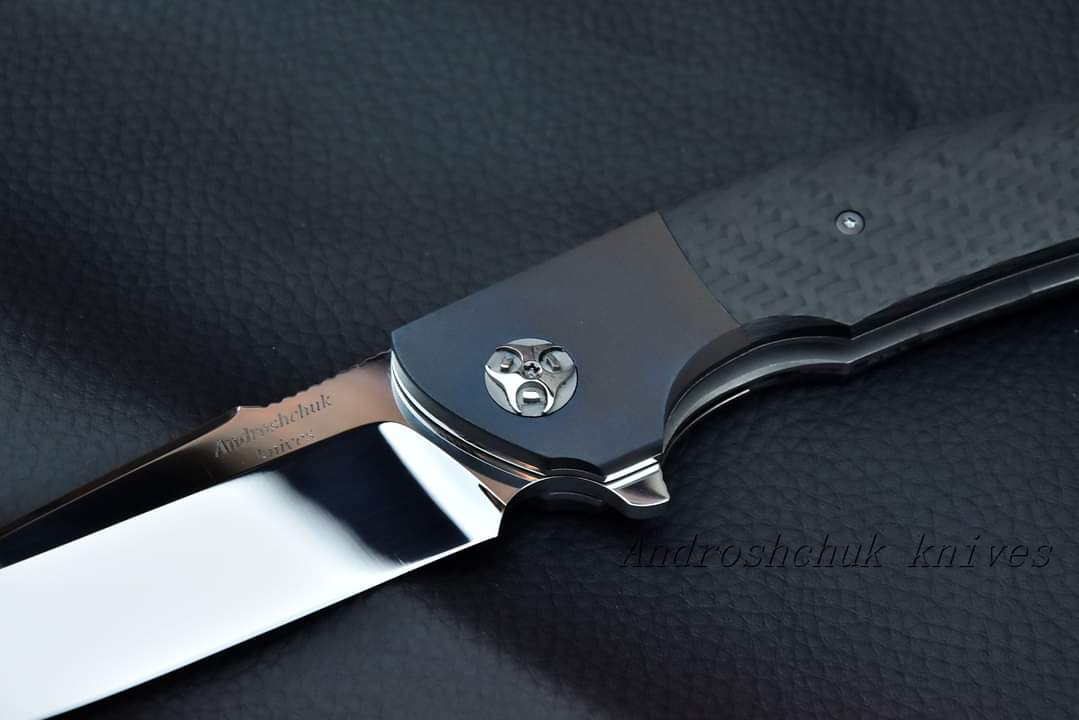
Як і будь-який дорогий і при цьому складний у виготовленні матеріал, карбон має ряд недоліків. При виробництві вуглепластиків необхідно дуже суворо витримувати технологічні параметри, при порушенні яких властивості міцності виробів різко знижуються. Для контролю якості виробів можуть застосовуватись ультразвукова дефектоскопія, рентгенівська та оптична голографія, а також акустичний контроль. Без них виробник працює «на дотик» і може не помітити прихованих дефектів. Іншим серйозним недоліком вуглепластиків є їхня низька стійкість по відношенню до ударних навантажень. Також необхідно пам'ятати, що згодом карбон вицвітає і може суттєво втрачати свою головну перевагу – привабливий зовнішній вигляд. Однак, незважаючи на ці недоліки, карбон по праву є преміальним матеріалом для кращих ножів.
ЩО ТАКЕ MICARTA І G10, І НІЖ ЦІ КОМПОЗИТНІ МАТЕРІАЛИ МІЖ СЕБЕ ВІДМІНЮЮТЬСЯ
Вже десятки років композитні матеріали Micarta та G10 є безперечними лідерами у ножовій індустрії, зокрема для виробництва рукояток різної складності. Матеріали виділяються своєю доступністю, легкістю виробництва та обробки, а також високою міцністю, зносостійкістю та невибагливістю в обслуговуванні. Обидва матеріали є композитними, в їх основі лежить полімерна смола, яка доповнюється шарами полоненої тканини різного типу.
Micarta-G10-Сomposite-materials-photo-2
Матеріал Micarta - це електроізоляційний матеріал, що складається з полімерної плівки (на основі крезолоальдегідної, фенолоальдегідної, ксиленолоальдегідної смоли, або смоли із суміші фенольної сировини). Він склеєний за допомогою різних електроізоляційних паперів, тканини (в основному льону натурального або штучного походження), або інших матеріалів схожої структури, також зустрічаються варіанти зі скловолокна та вуглецевого волокна. Колір матеріалу залежить від смоли та тканинної основи, що використовується при склейці. Micarta відносно м'який матеріал і потребує ретельної ручної обробки. Тому її застосовують у виробництві рукояток для дорожчих ножів.
Мікарту зареєстровано як товарний знак американської компанії Industrial Laminates / Norplex, Inc. (Norplex-Micarta). Її вітчизняним аналогом можна розглядати матеріал під назвою "Гетінакс", який переважно використовується як основа для друкованих плат. Матеріал також має листкову пресовану структуру, яка складається з паперової основі з додаванням просочення з фенолоальдегідної або епоксидної смоли.
Мікарта на лляній основі має більш привабливий оптичний ефект під час шліфування волокон. Після завершення шліфування поверхню можна полірувати або піскоструминну обробку. У першому варіанті, поверхня матеріалу вийде гладкою, шовковистою, теплою і приємною на дотик. А в другому, матеріал стає шорстким і має матовий відтінок, крім того, надійно тримається в руці, не ковзає.
Основні характеристики Micarta:
- підвищена водостійкість;
- відмінна витримка температурних перепадів;
- міцність до механічної обробки;
- щільна структура, яка не поглинає запахи;
- мікрорельєф матеріалу не ковзає в руці навіть за умов вологої поверхні;
- щільне прилягання до леза, яке зовсім не залишає проміжків і не дає залишкам продуктів і шкідливим мікроорганізмам накопичуватися.
Матеріал G10 - це легкий, твердий і досить жорсткий композитний матеріал з текстурованою поверхнею, який переважно використовується при виготовленні рукояток як складних ножів кишенькових, так і ножів з фіксованим клинком. Даний матеріал створюється шляхом укладання декількох шарів скловолокна, ретельно просочених епоксидною смолою, у спеціальний вакуумний прес, де, під впливом стиснення та тепла, смола остаточно твердне, зберігаючи структуру склотканини.
Для матеріалу G10 характерна хороша стійкість до ударів, зносостійкість, вологостійкість, а також простота в обробці та обслуговуванні. Матеріал можна пофарбувати у різні кольори, у тому числі шарами. Поверхня G10 також може полірувати до глянсового стану, або мати шорстку протиковзну структуру, під впливом шліфувального верстата, або піскоструминної обробки.
Ключові особливості G10:
- висока стабільність базових властивостей при коливаннях температури;
- витримує високі ударні навантаження, навантаження на стиск та розтяг;
- висока загальна гідрофобність та стійкість до впливу хімікатів;
- відносно мало важить, по відношенню до загальної міцності та щільності;
- низька електропровідність;
- може набувати різних форм.
Композитні матеріали G10 та Micarta мають практично аналогічний склад та зовнішню схожість. У той же час, матеріал G10 має більш високу вогнетривкість, хоча і не є негорючим матеріалом, має більш високу міцність на стиск, вигин, удар і розрив, а також більш простий і бюджетний у виробництві. При цьому G10 поступається в плані "чіпкості" у вологих умовах, а також, тактильно, відчувається менш "натуральною".
Якісні та оригінальні сталеві вкладиші є чудовою прикрасою ексклюзивних та неповторних ножів Студії ексклюзивних ножів ручної роботи FOMENKO KNIFES (Україна), яка пропонує замовити та купити в інтернет-магазині https://knife.net.ua або за телефоном. . +380961711010
Рекомендовані товари

Доставка і оплата
Доставка і оплата
Доставка Новою Поштою
Швидкість доставки в будь-яке відділення Нової пошти в Україні фіксується оператором, але зазвичай не перевищує 1-3 календарних днів.
Готівкою
Оплата готівкою при отриманні товару.
Післяплатою на Новій Пошті (при собі необхідно мати паспорт або водійське посвідчення).
Visa и MasterCard
Оплата замовлення на карту Приват Банку.
Доставка товару можлива тільки після підтвердження платежу.
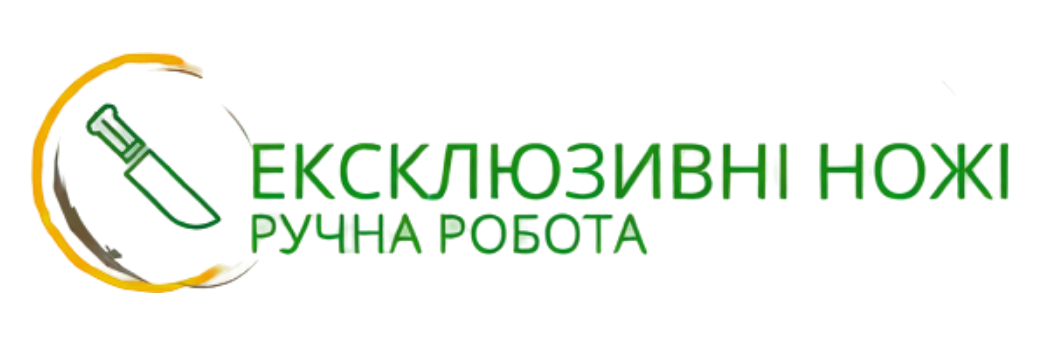











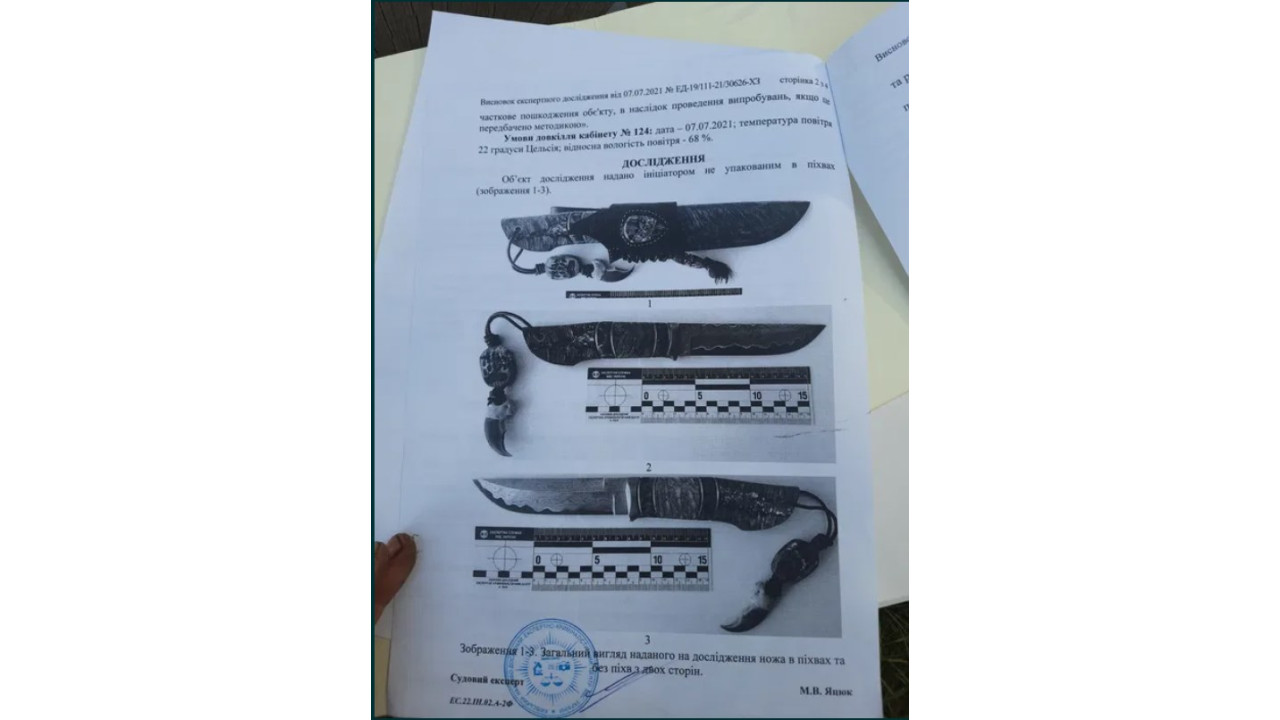
















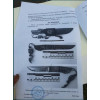





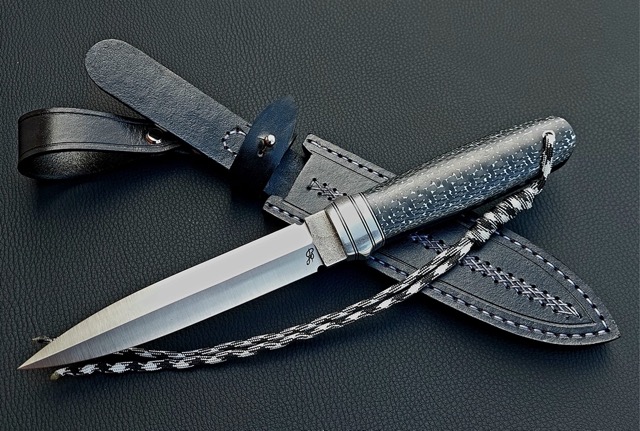

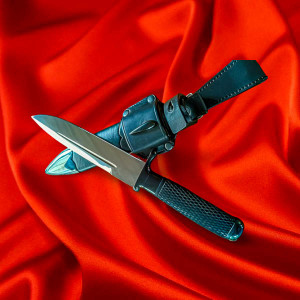
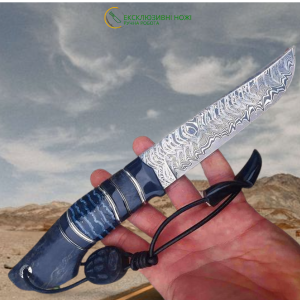
-300x300.png)
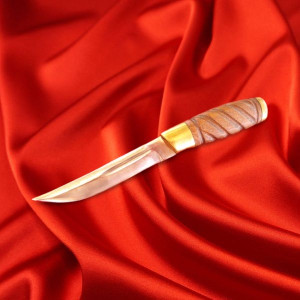
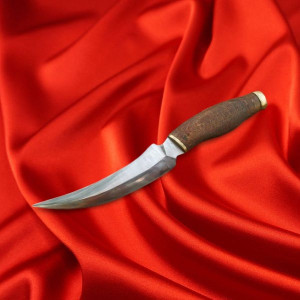
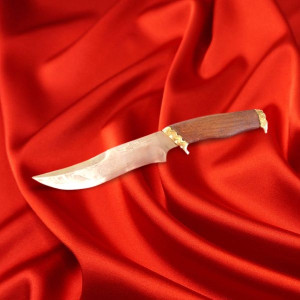
 мисливський ніж/ПЕРО_2 мисливський ніж111-300x300.jpg)
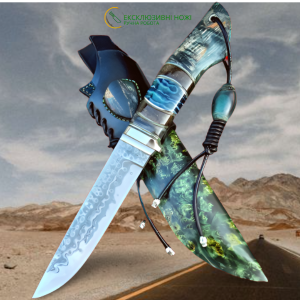
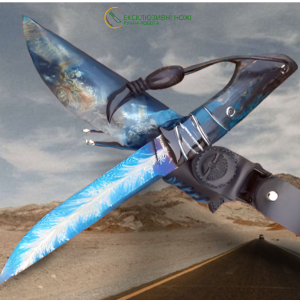
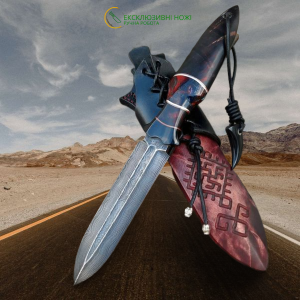
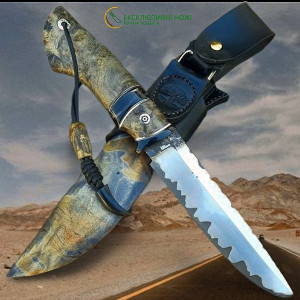
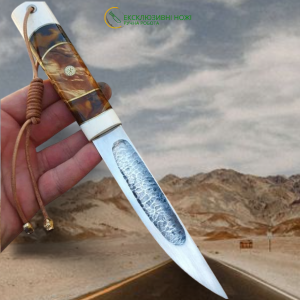
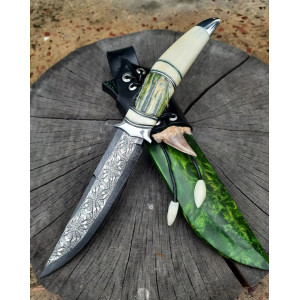
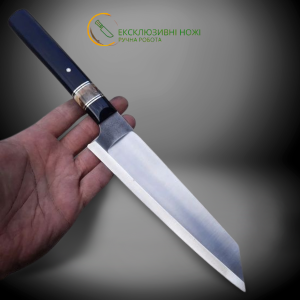

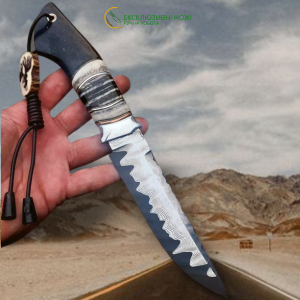
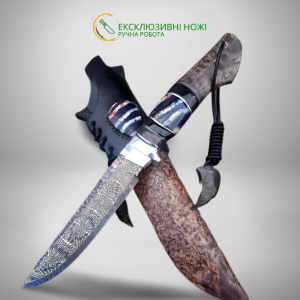
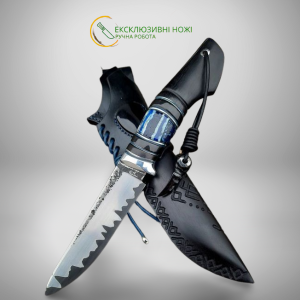
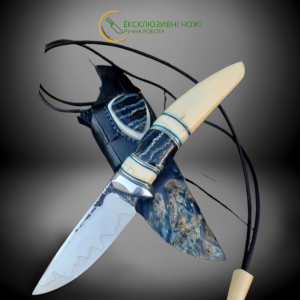
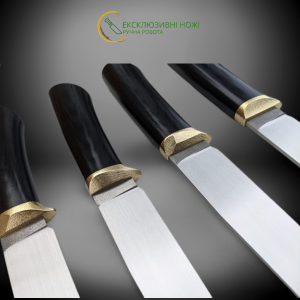
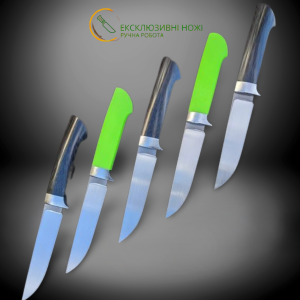
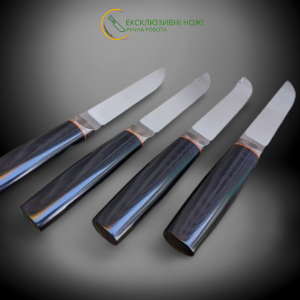
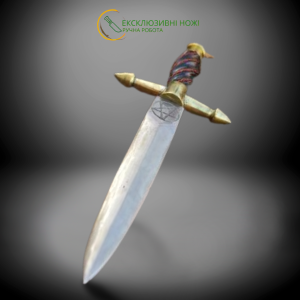
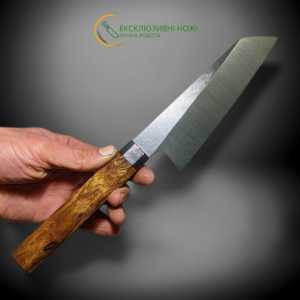

/КЛОНДАЙК (шукач скарбів) н6іж ручної роботи майстра студії ножів Павла Гончаренка-300x300.png)
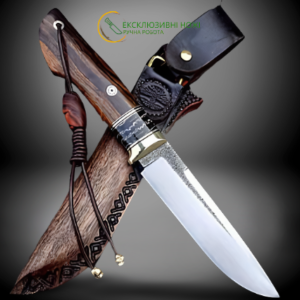
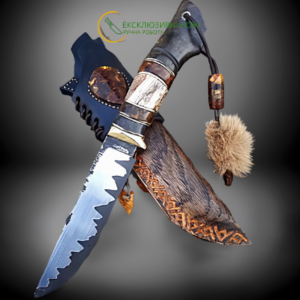
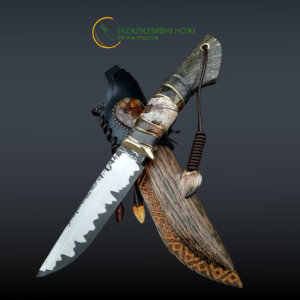
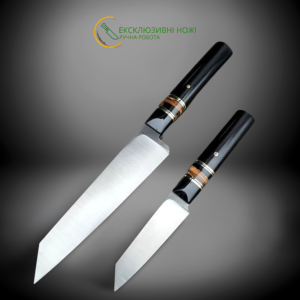
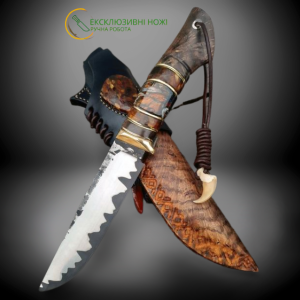
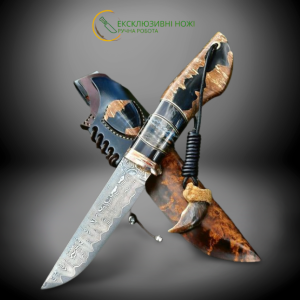
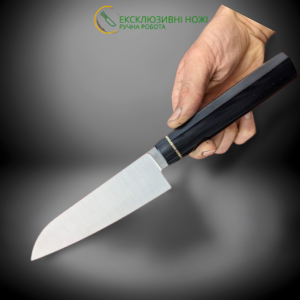
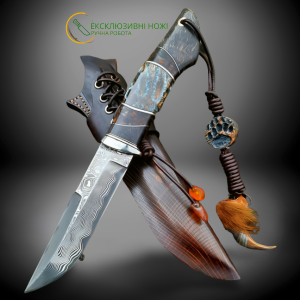







-300x300.png)
 — середнє 2-300x300.jpg)






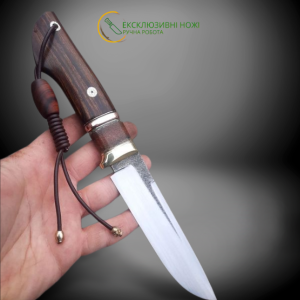









































































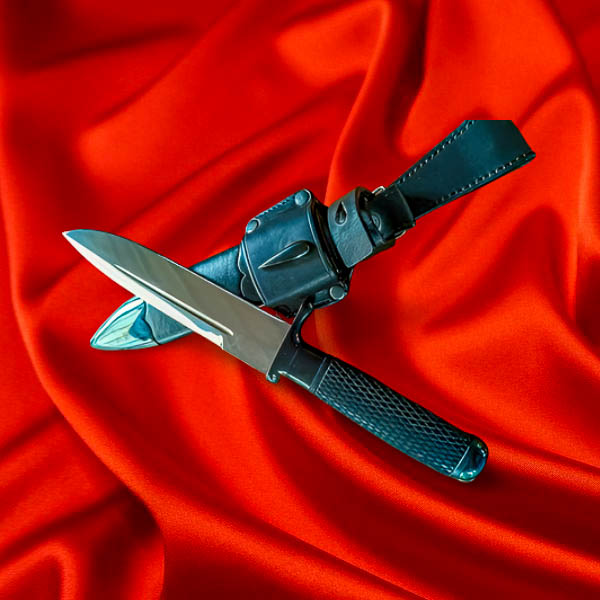


-600x600.png)
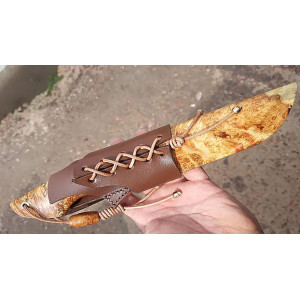
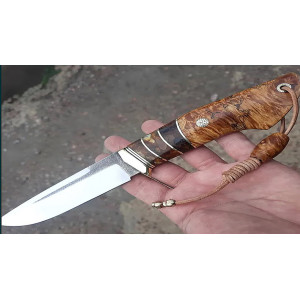






_заст-600x600.png)
9-300x300.jpg)
6-300x300.jpg)


























